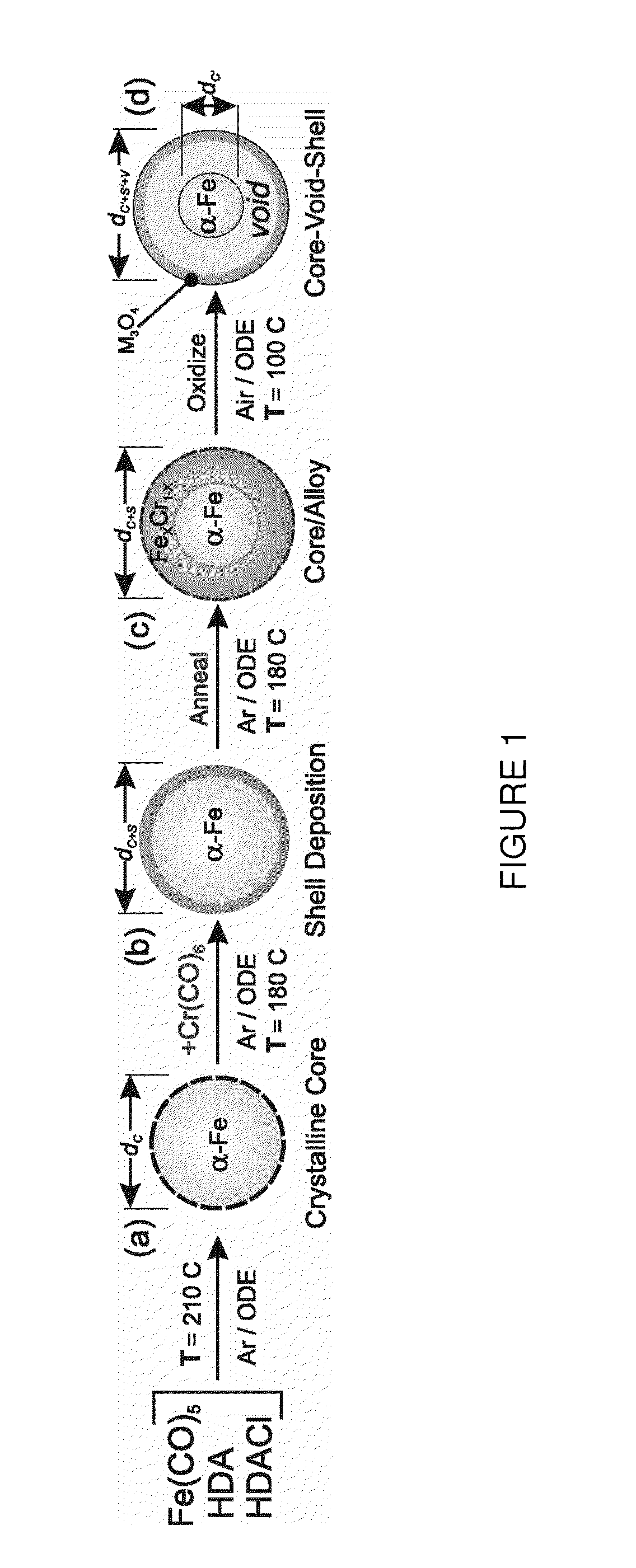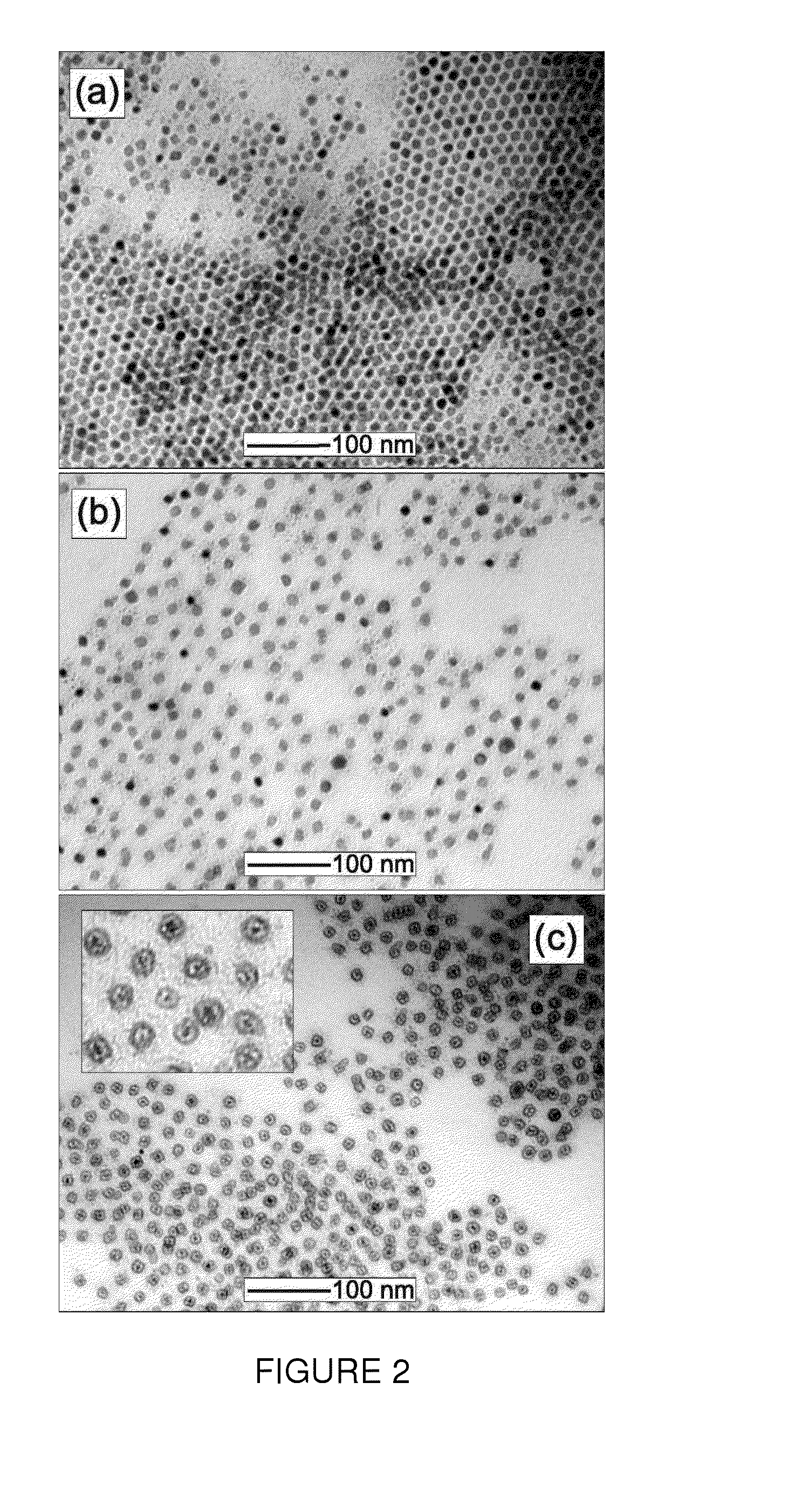Method to control void formation in nanomaterials using core/alloy nanoparticles with stainless interfaces
a technology of nanoparticles and interfaces, applied in the field of nanoparticles, can solve problems such as self-limited diffusion, and achieve the effect of high uniform and stable core-void-shell morphology
- Summary
- Abstract
- Description
- Claims
- Application Information
AI Technical Summary
Benefits of technology
Problems solved by technology
Method used
Image
Examples
example
[0041]Chemicals
[0042]Iron(0)pentacarbonyl (Fe(CO)5, 99.5%), Chromium(0)hexacarbonyl (Cr(CO)6, 98%), Oleylamine (OAm, 70%), 1-Octadecene (ODE, 90%), Tetrahydrofuran (THF, anhydrous, 99.9%, inhibitor-free), Hexadecylamine (HDA, 98%), HCl (1.0 M in diethylether), HAuCl4.xH2O (99.999% trace metals basis), 1,2-hexadecanediol (technical grade, 90%), Cu(acac)2 (≧99.99% trace metals basis), HAuCl4.xH2O (99.999% trace metals basis), 1,2-hexadecanediol (technical grade, 90%), Cu(acac)2 (?99.99% trace metals basis) were purchased from Sigma-Aldrich and used as received.
[0043]Synthesis
[0044]HDA•HCl Ligand: The HDA•HCl ligand was synthesized by adding an excess amount HCl in diethylether (12 mL, 1.0 M) was added into a solution of 10 mmol of hexadecylamine (HDA) (2.44 g) in 100 mL of hexanes that was pre-cooled in an ice bath. The white precipitate was formed and the reaction mixture was warmed up to room temperature and was stirred for 2 h before the solution was decanted and the precipitate wa...
PUM
| Property | Measurement | Unit |
|---|---|---|
| Diameter | aaaaa | aaaaa |
| Diameter | aaaaa | aaaaa |
| Diameter | aaaaa | aaaaa |
Abstract
Description
Claims
Application Information
 Login to View More
Login to View More - R&D
- Intellectual Property
- Life Sciences
- Materials
- Tech Scout
- Unparalleled Data Quality
- Higher Quality Content
- 60% Fewer Hallucinations
Browse by: Latest US Patents, China's latest patents, Technical Efficacy Thesaurus, Application Domain, Technology Topic, Popular Technical Reports.
© 2025 PatSnap. All rights reserved.Legal|Privacy policy|Modern Slavery Act Transparency Statement|Sitemap|About US| Contact US: help@patsnap.com



